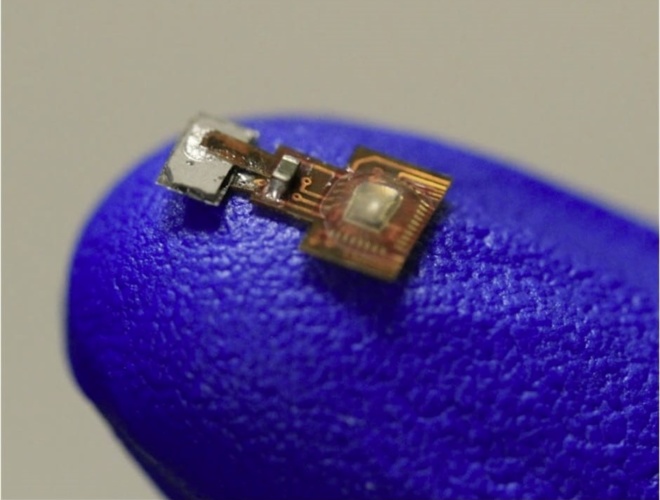
The advance by Rice University engineers in Texas is an integrated microsystem dubbed MagNI (magnetoelectric neural implant) that incorporates magnetoelectric transducers. These allow the chip to harvest power from an alternating magnetic field outside the body.
Smartphone controls therapeutic brain implants
Brain implant electrode material shows MRI compatibility
The system was developed by Kaiyuan Yang, an assistant professor of electrical and computer engineering; Jacob Robinson, an associate professor of electrical and computer engineering and bioengineering; and co-lead authors Zhanghao Yu, a graduate student, and graduate student Joshua Chen, all at Rice's Brown School of Engineering.
Yang introduced the project this week at the International Solid-State Circuits Conference in San Francisco.
According to Rice, MagNI targets applications that require programmable, electrical stimulation of neurons, for instance to help patients with epilepsy or Parkinson's disease.
"This is the first demonstration that you can use a magnetic field to power an implant and also to program the implant," Yang said in a statement. "By integrating magnetoelectric transducers with CMOS [complementary metal-oxide semiconductor] technologies, we provide a bioelectronic platform for many applications. CMOS is powerful, efficient and cheap for sensing and signal processing tasks."
He said MagNI has clear advantages over current stimulation methods, including ultrasound, electromagnetic radiation, inductive coupling and optical technologies.
"People have been demonstrating neural stimulators on this scale, and even smaller," Yang said. "The magnetoelectric effect we use has many benefits over mainstream methods for power and data transfer."
He said tissues do not absorb magnetic fields as they do other types of signals, and will not heat tissues like electromagnetic and optical radiation or inductive coupling. "Ultrasound doesn't have the heating issue but the waves are reflected at interfaces between different mediums, like hair and skin or bones and other muscle."
Because the magnetic field also transmits control signals, Yang said MagNI is also "calibration free and robust."
"It doesn't require any internal voltage or timing reference," he said.
Components of the prototype device sit on a flexible polyimide substrate with three components: a 2 x 4mm magnetoelectric film that converts the magnetic field to an electric field, a CMOS chip and a capacitor to temporarily store energy.
The team successfully tested the chip's long-term reliability by soaking it in a solution and testing in air and agar, which emulates the environment of tissues.
In the current generation of chips, energy and information flow only one way, but Yang said the team is working on two-way communication strategies to facilitate data collection from implants and enable more applications.




Red Bull makes hydrogen fuel cell play with AVL
Formula 1 is an anachronistic anomaly where its only cutting edge is in engine development. The rules prohibit any real innovation and there would be...